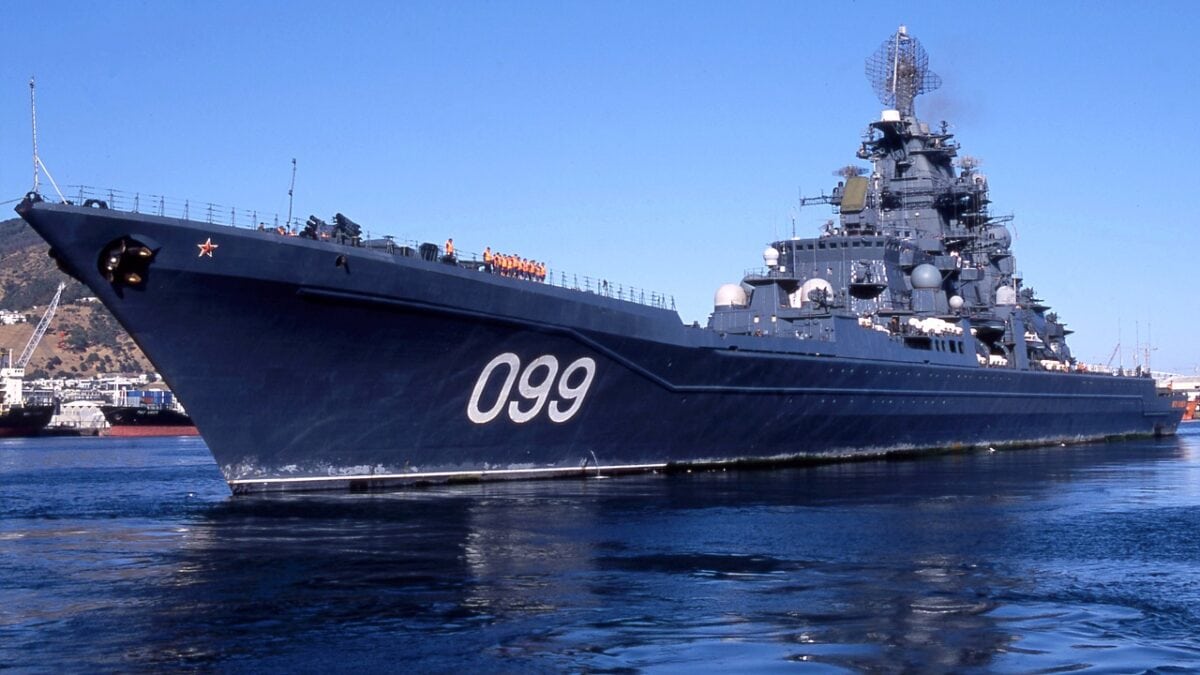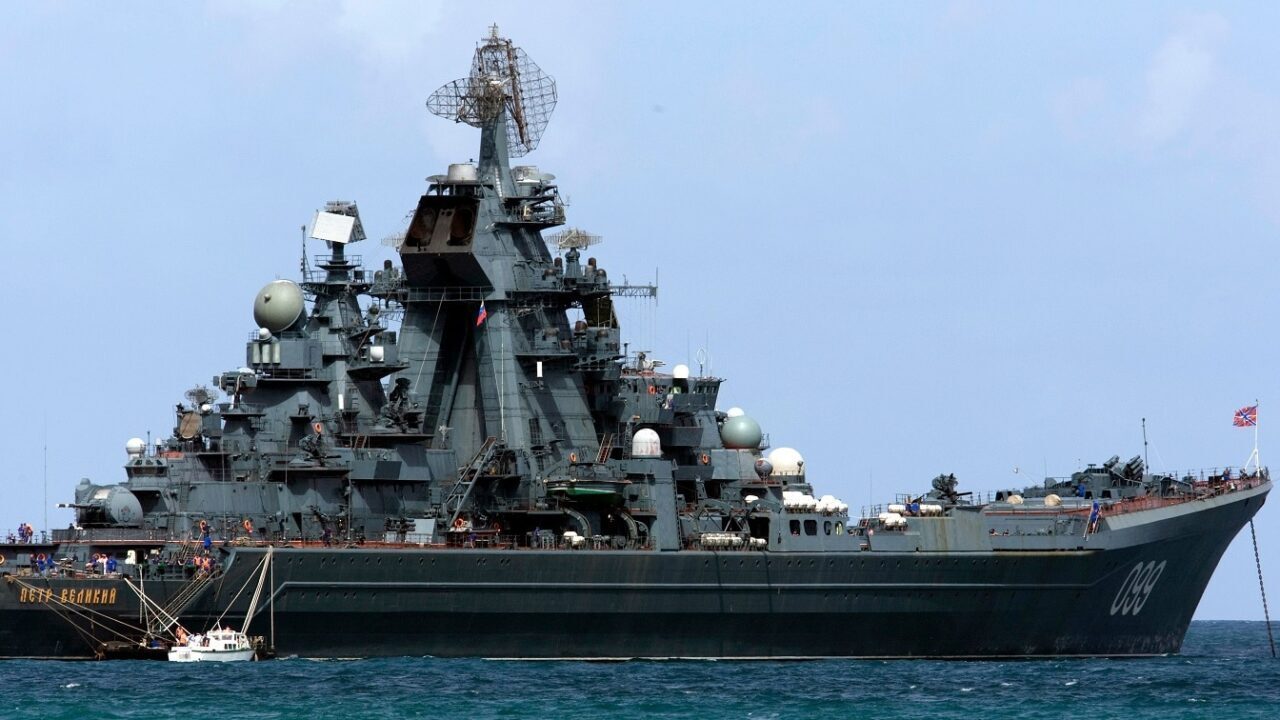Russia’s Battlecruisers are the Last of Their Kind: Throughout its history, Russia has never truly been a naval powerhouse – despite its best efforts. In fact, the Imperial Russian Navy never truly recovered from a humiliating defeat during the Russo-Japanese War. While the government of Czar Nicholas I sought to rebuild a fleet, it didn’t exactly work out so well, as many of the crews of the Russian Navy’s most powerful warships took part in the general mutiny after the February Revolution in 1917, and later joined the Bolsheviks after the October Revolution.
The Soviet Navy did play a significant role during the Cold War and was able to use power projection to maintain Moscow’s sphere of influence in Eastern Europe. Yet, even as the Soviet Navy was the largest in the overall number of vessels, the core of its fleet was submarines rather than surface combatants.
Pitiful Naval Force
Today, the Russian Navy could arguably be in its poorest state since it was first formed in 1696. Though it has taken great efforts to modernize the fleet, the efforts have often shown little progress. This is most notable with Russia’s battlecruisers – the Kremlin’s largest warships, and the heaviest surface combatants in operation in the world.
A total of four (of a planned five) nuclear-powered Project 1144 Orlan Kirov-class guided-missile cruisers were constructed between 1974 and 1998 – and the introduction of the lead vessel had played a key role in the re-commissioning of the United States Navy’s Iowa-class battleships in the 1980s.
The vessels never lived up to the hype.
Not So Mighty Battlecruisers
The first two of the battlecruisers, which have a displacement similar to battleships of the First World War, have been retired and are undergoing scrapping.
The third vessel, commissioned in 1988 and currently named Admiral Nakhimov, has rarely been deployed to sea and since 1999 had been permanently docked in Sevmash to await repairs. Only in 2006 was a decision made to modernize the ship.
Its refit has been in a word: slow.
While the original plan was to have the ship back in service by 2012, the project has had numerous stops and starts, and the current timeline suggests that the guided-missile cruiser could be returned to service in 2023 at the earliest, but the odds are that it could be years before she heads back to sea.
Once Admiral Nakhimov finally is in operation again, the plan is then to send Pyotr Velikiy – the ex-Yuriy Andropov – to undergo her own refit and upgrade. Currently operational with the Russian Navy’s Northern Fleet, she is Moscow’s largest warship in service. However, she has mainly taken part in drills in the Barents Sea or has remained in port.

Kirov-Class Battlecruisers. Image Credit: Russian Navy.
Though a capable warship in the late Cold War, she is largely considered past her prime. Russia may hope to extend her operational life with a refit, yet, the question is how long such an endeavor may take – and it is quite likely that if this warship heads to port for an upgrade, it may likely never return to service.
A Senior Editor for 19FortyFive, Peter Suciu is a Michigan-based writer. He has contributed to more than four dozen magazines, newspapers, and websites with over 3,000 published pieces over a twenty-year career in journalism. He regularly writes about military hardware, firearms history, cybersecurity, and international affairs. Peter is also a Contributing Writer for Forbes and Clearance Jobs. You can follow him on Twitter: @PeterSuciu.

